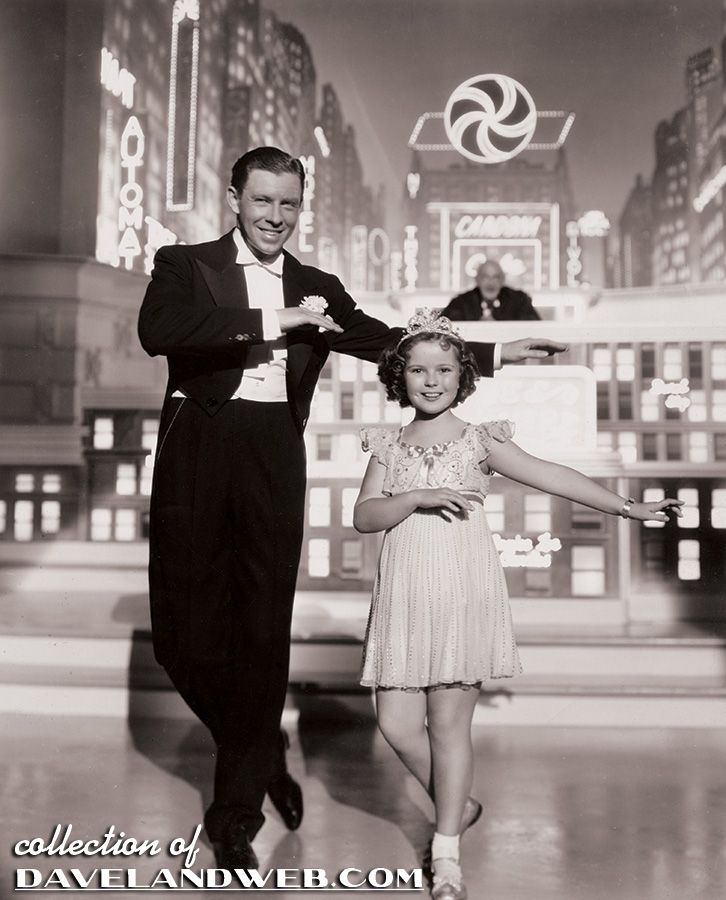
In the finale of the 1938 film, “Little Miss Broadway,” Shirley Temple dances in one of the most elaborate musical numbers of her childhood career. An art deco courtroom magically transforms into a backdrop of New York City ablaze in neon as she and George Murphy leap and tap their way across the screen. It is truly one of the most surreal (yet entertaining) Shirley scenes. I had the privilege of seeing her well preserved costume (designed by Gwen Wakeling) when it was on tour for the “Love, Shirley Temple” auction in 2015.
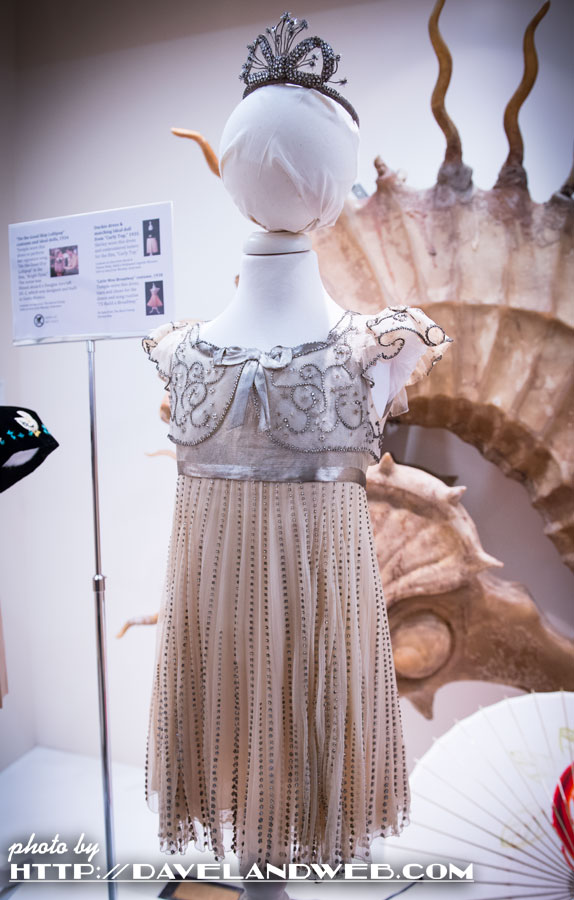
Shirley’s mother had saved the tiara, dress, bolero cape, and the shoes. The costume is deceptively simple; upon closer inspection you can see the very detailed beadwork that went into each piece. Besides how it looked, it also had to be designed for Shirley’s dancing, so that it would flow perfectly with every twirl.
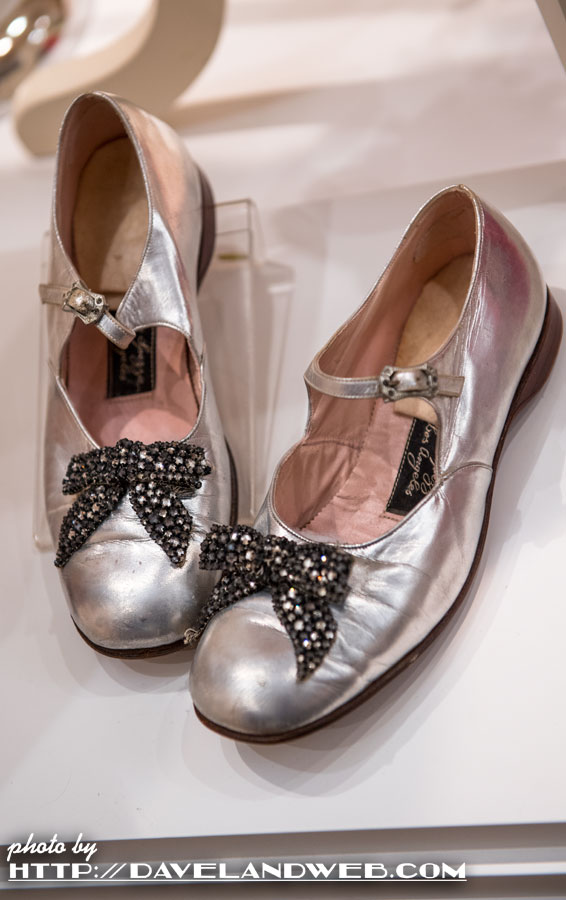
In short, Gwen Wakeling knew what she was doing.
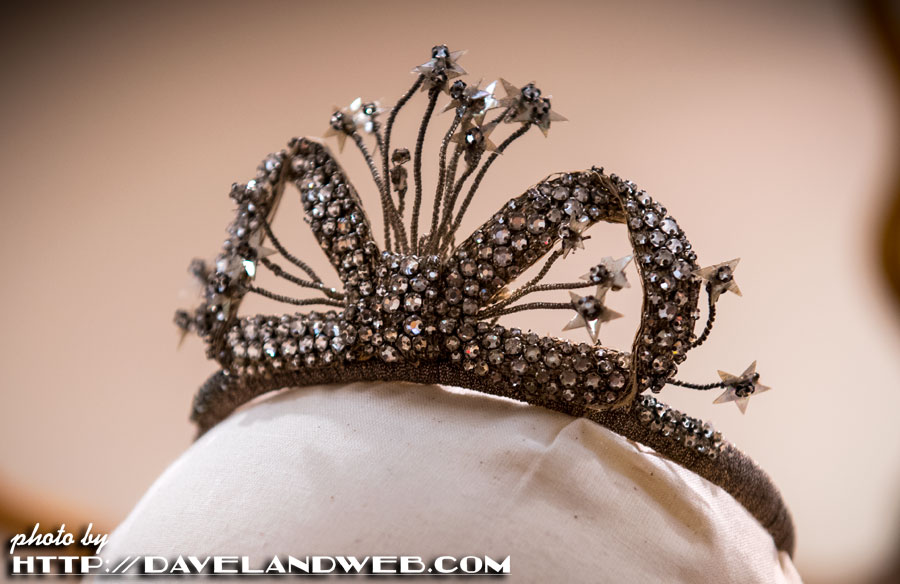
Next to the costume was an 11" composition doll that the studio created for Shirley using some of the same fabrics from the original costume. Fox did this for many of Shirley’s films. I remember when I saw this noble effort, I thought it missed the mark on many levels. The skirt was too short and called attention to the doll’s extra long legs. By using the same size rhinestones as Shirley’s costume, it made the doll-sized version look out of scale and more like a home crafting project.
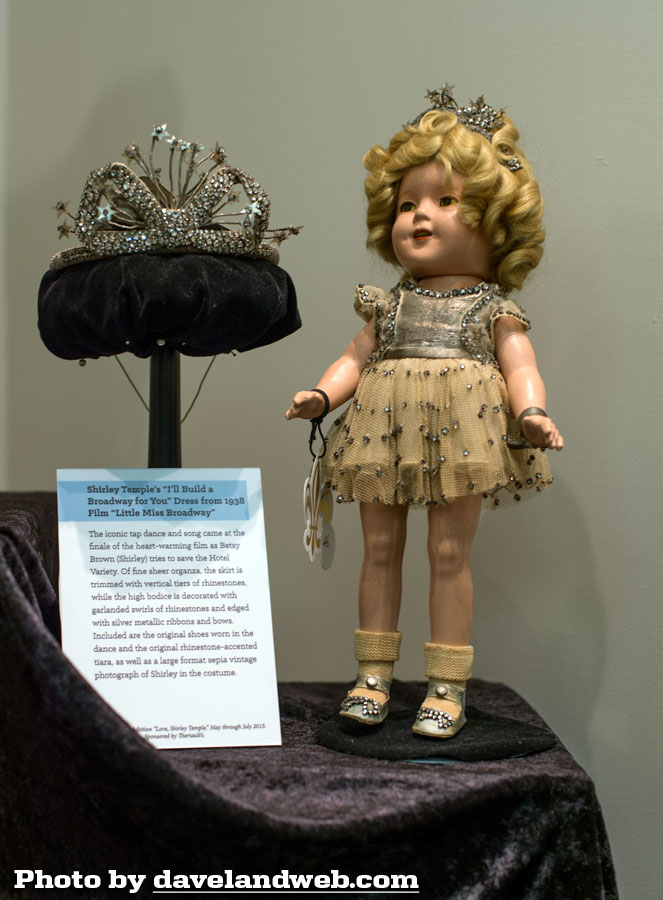
I do have to give Fox credit for the attempt; this is not an easy costume to duplicate successfully, which is why (to my knowledge), no doll company has attempted it. A detail I’d never noticed shows up in this publicity still of Joan Crawford and Shirley on set: she’s wearing a little ribbon around her wrist. Kudos to Fox for including this on their doll.
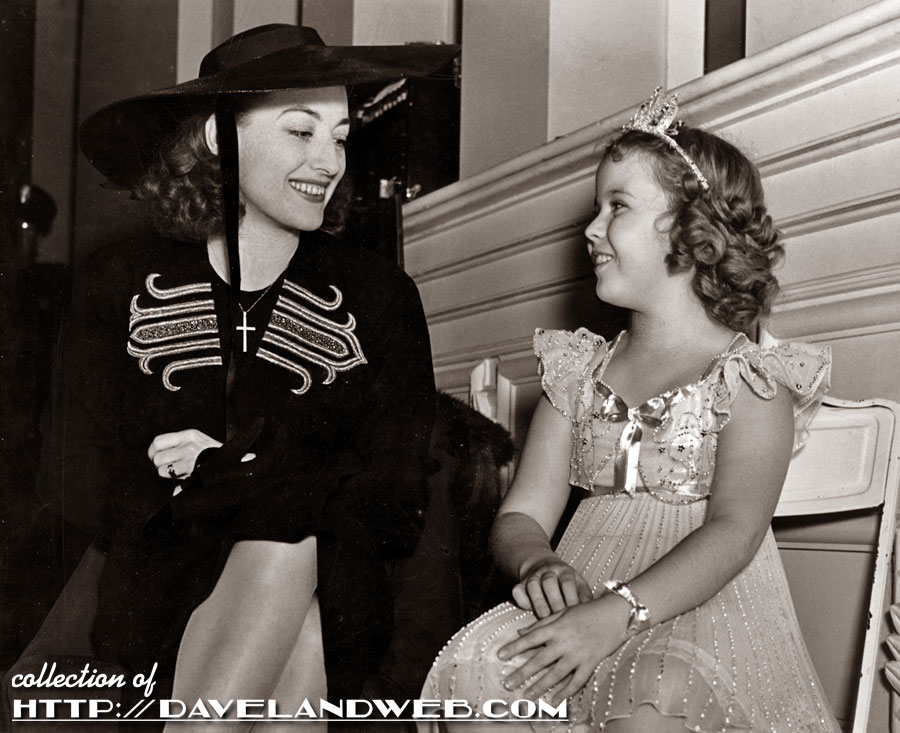
I have seen a number of attempts to replicate this costume for the composition doll. While some are better than others, they all missed the mark of scaling down the many pieces of the costume AND making the correct decision to edit out the elements that could bog it down once they were “shrunk” for a doll.

Shirley’s mother had saved the tiara, dress, bolero cape, and the shoes. The costume is deceptively simple; upon closer inspection you can see the very detailed beadwork that went into each piece. Besides how it looked, it also had to be designed for Shirley’s dancing, so that it would flow perfectly with every twirl.

In short, Gwen Wakeling knew what she was doing.

Next to the costume was an 11" composition doll that the studio created for Shirley using some of the same fabrics from the original costume. Fox did this for many of Shirley’s films. I remember when I saw this noble effort, I thought it missed the mark on many levels. The skirt was too short and called attention to the doll’s extra long legs. By using the same size rhinestones as Shirley’s costume, it made the doll-sized version look out of scale and more like a home crafting project.

I do have to give Fox credit for the attempt; this is not an easy costume to duplicate successfully, which is why (to my knowledge), no doll company has attempted it. A detail I’d never noticed shows up in this publicity still of Joan Crawford and Shirley on set: she’s wearing a little ribbon around her wrist. Kudos to Fox for including this on their doll.

I have seen a number of attempts to replicate this costume for the composition doll. While some are better than others, they all missed the mark of scaling down the many pieces of the costume AND making the correct decision to edit out the elements that could bog it down once they were “shrunk” for a doll.
Once I learned that a replica of Shirley’s tiara (and a darned good one at that!) was available for purchase, the wheels started spinning. I realized that it looked best on a 27" Shirley; originally I had wanted it on a spare 25" composition Shirley, but it just looked too big for the doll’s head. Next, I found myself ordering a pair of custom-made doll shoes to match the ones Shirley wore. Of course the silver silk wrist ribbon was easy.
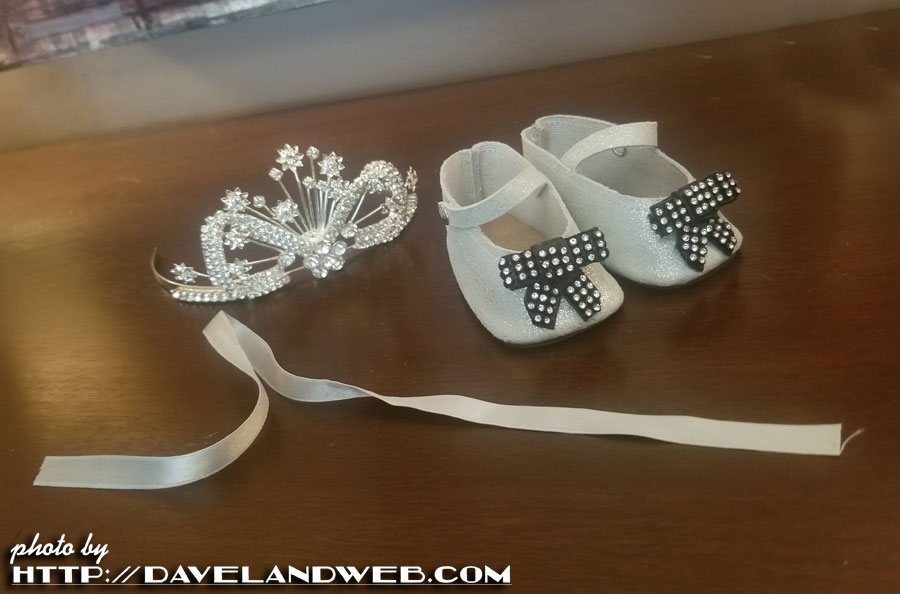
Here are the incredible custom-made shoes:
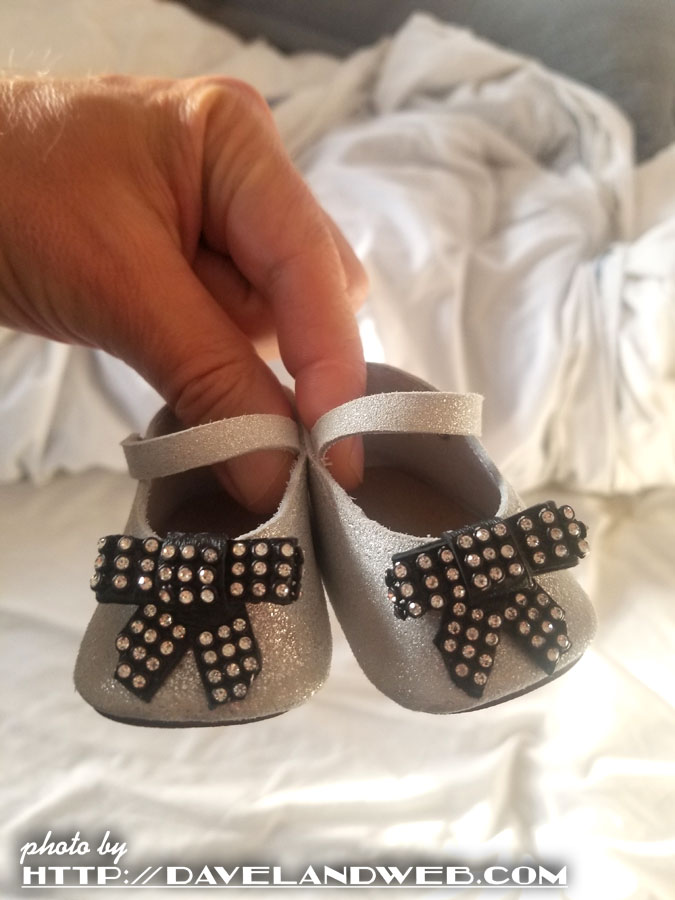
This photo of Shirley shows her waiting for someone to make the dress. The photo of the real actress covers the doll for the sake of modesty (thanks for the framed photo, Melissa!).
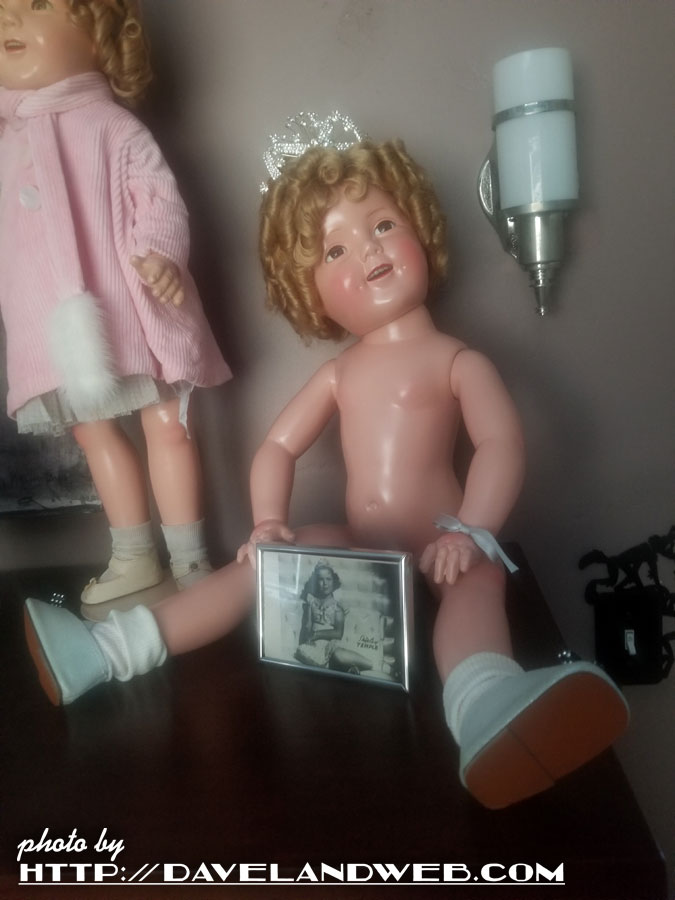

Here are the incredible custom-made shoes:

This photo of Shirley shows her waiting for someone to make the dress. The photo of the real actress covers the doll for the sake of modesty (thanks for the framed photo, Melissa!).

One doll-outfit-creating friend looked at the project and didn’t respond; that was not a good sign. The next one I contacted actually seemed piqued by the challenge. I told this person that if she would do the dress and the bolero, I would tackle the beading (what was I thinking?!?). She graciously agreed and before I knew it, Shirley was having her first fitting.
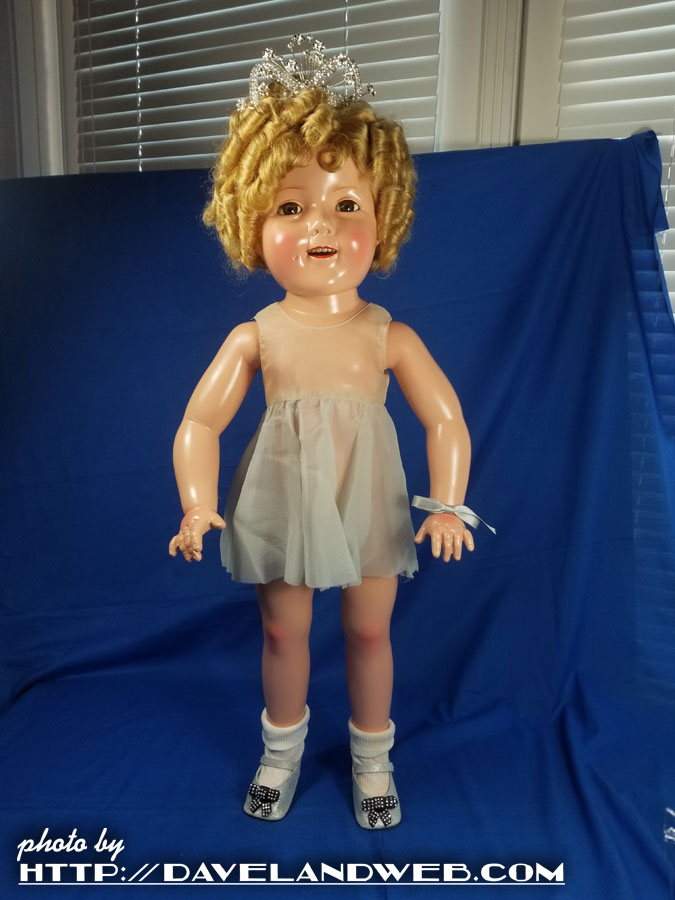

Based on my feedback and the photos I sent to my expert seamstress (who knew more than a thing or two about doll outfits as well as human-sized outfits), she created the second test outfit with a few samples of sequins and trim. I was already impressed with this version and knew she would do a great job. I sent her the video of the dance number so that she could study how the dress moved and view it from all angles. This was very helpful to her as far as deducing how the original was constructed. These are the behind-the-scenes things that most consumers never think about and why they question some of the pricing for custom couture work. There is much more going on in the construction of these gems than meets the eye!
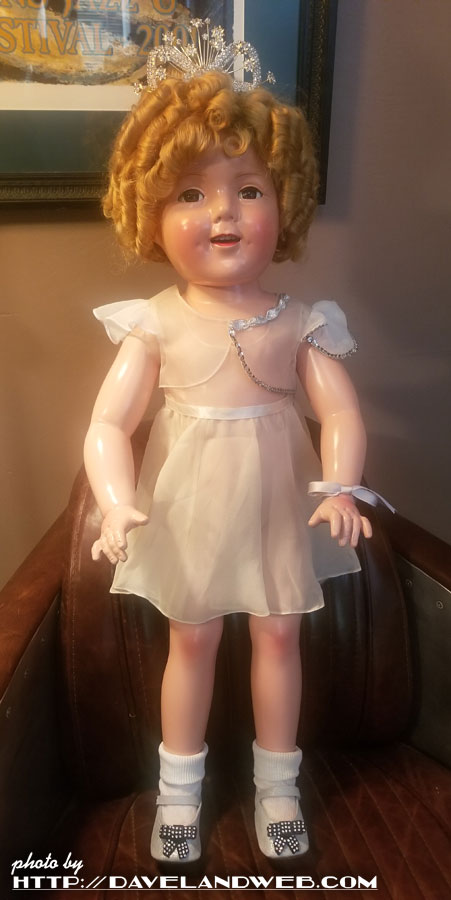

Not only did my friend do an outstanding job of putting together the dress and bolero, she went above and beyond the scope of what I had requested by doing the beadwork on the bolero top, too. Did she imitate every swirl and bead from the original? No. Would that have been a hot mess if she had? Yes. In a case of less is much more, she perfectly captured the spirit of the original costume while making everything look appropriate for my 27" doll. Saying “thank you” was barely enough to show my gratitude.
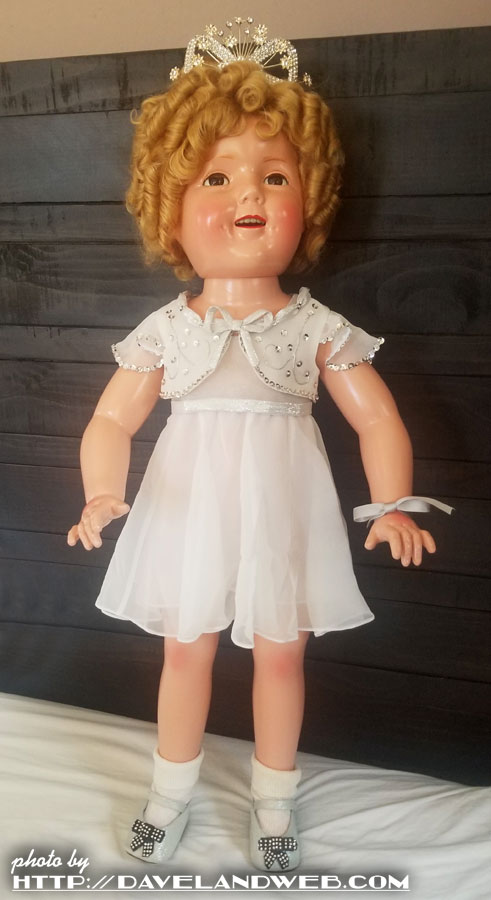

I quickly ordered the matching sequins and glass beads I would need to hand-sew onto the skirt. Oh yes...and the thread, too. Once all my supplies arrived, the project sat…and sat…until I found the time (and the courage) to tackle the sewing part. This was nothing that could be done by machine or even with a hot glue gun. Thanks to a few youtube videos and expert advice from my friend, I finally got down to business and braved my first attempt at doing beadwork. I created a template looking at the original costume and scaling/spacing them out to appropriate doll size. I marked each panel of the skirt’s delicate fabric, realizing that this was not going to be something I could goof on. The material easily snagged and if not sewn properly, would bunch up and look like…well yes…a hot mess. Based on my template, I would end up sewing 252 sequin/bead combinations. Yikes! And here was the beginning:
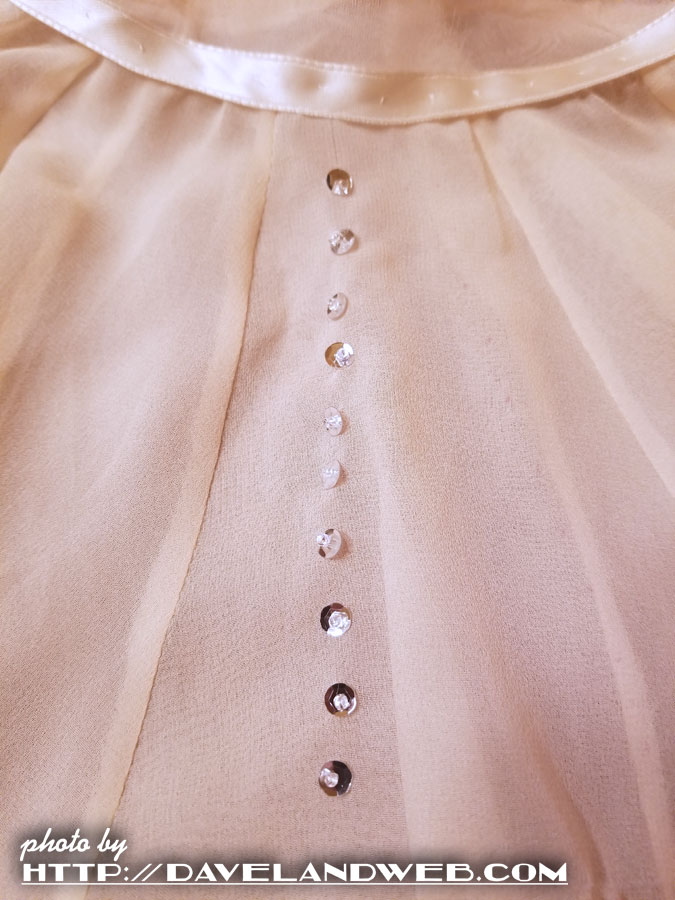

While I won’t be changing professions any time soon, I was happy with the work I did on the skirt, and thought it looked great with the professionally-done bolero top.
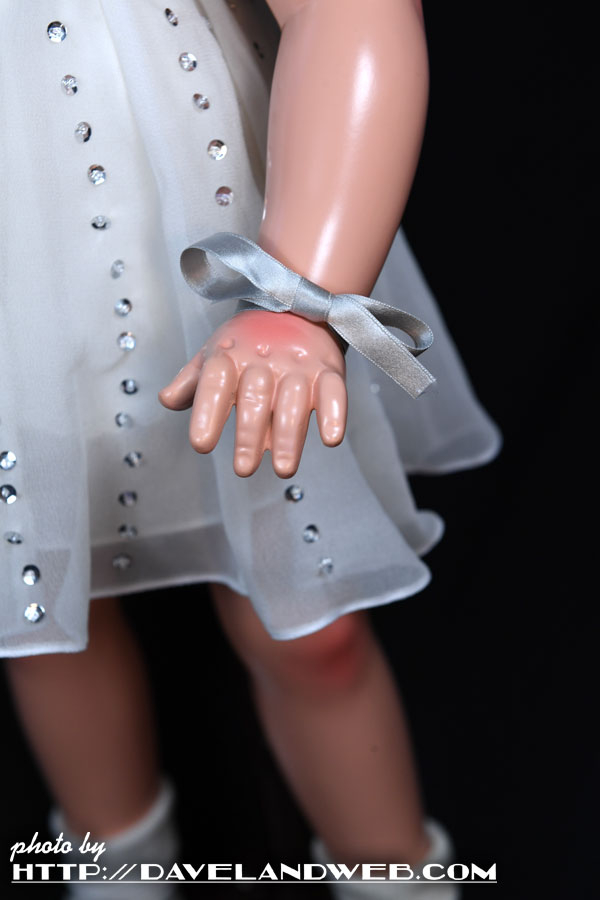
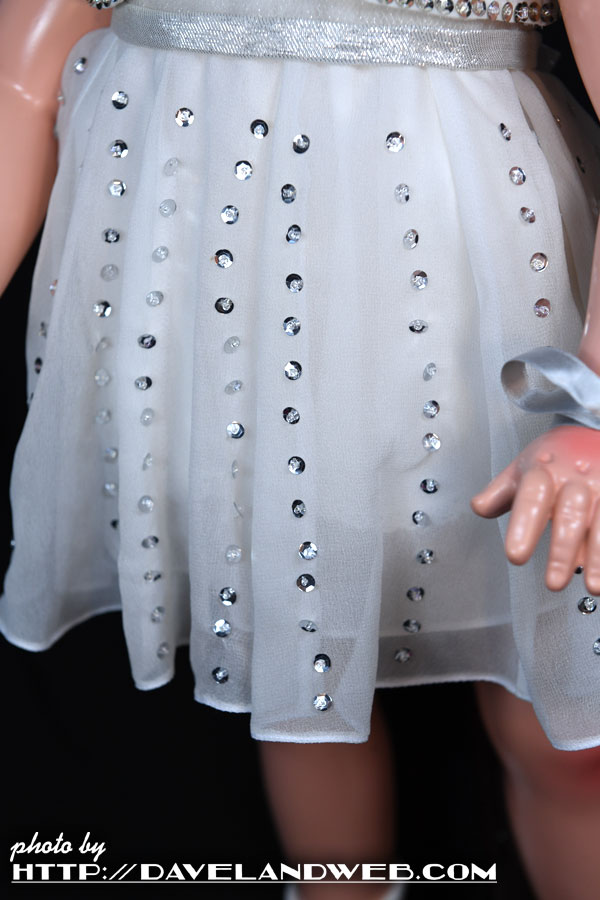
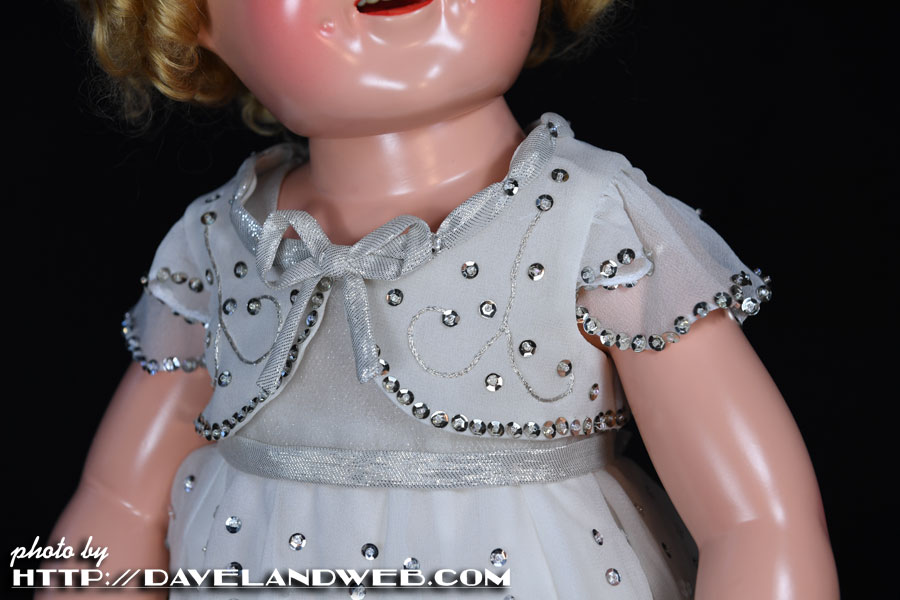
And now Little Miss Broadway has a special place in my Shirley doll room! Laugh department: while my friend was more than anxious to hear comments from the Shirley doll community, she did request anonymity as this was not a project she wanted to duplicate! After 252 sequin/bead sewing combinations, I can totally sympathize!
See more Shirley Temple doll photos at my main website.



And now Little Miss Broadway has a special place in my Shirley doll room! Laugh department: while my friend was more than anxious to hear comments from the Shirley doll community, she did request anonymity as this was not a project she wanted to duplicate! After 252 sequin/bead sewing combinations, I can totally sympathize!
See more Shirley Temple doll photos at my main website.

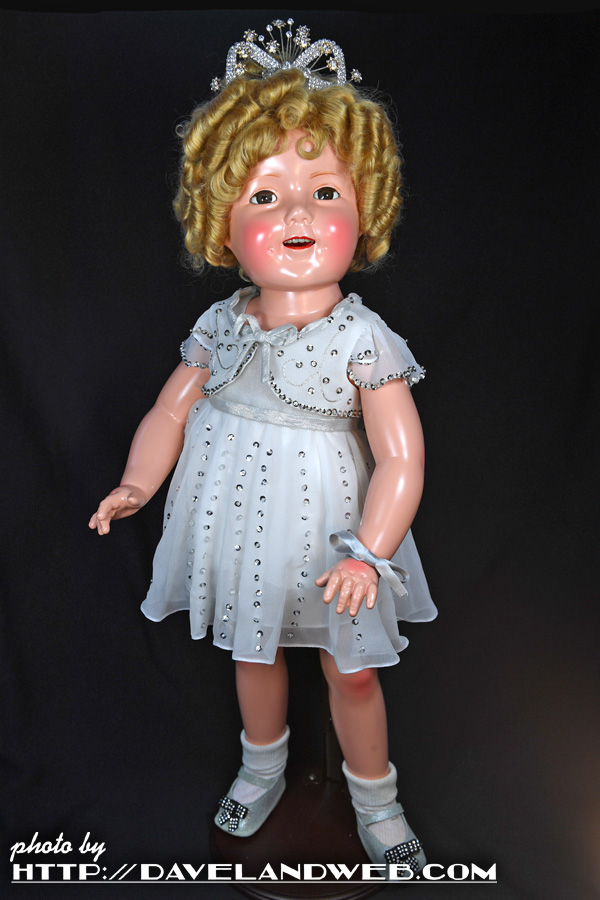
No comments:
Post a Comment